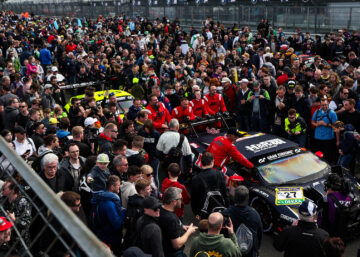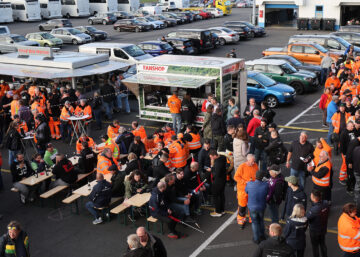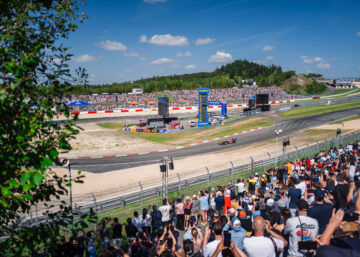A new double yellow flag regulation with immediate application has been introduced for the races of the VLN endurance racing championship Nürburgring. In the case of an accident where two yellow flags are waved, the drivers must reduce speed down to 120 km/h. Only if deemed absolutely necessary, the Code-60 signal in combination with a yellow flag will be shown at the next marshal’s post from where the speed limit of 60 km/h then applies. In the past, whenever the double yellow flags were shown, this indicated to the drivers that the maximum speed of 60 km/h had to be respected. The Code-60 flag was introduced in 2014 as an additional signal. A provision that was much discussed and that was not revised for the VLN season 2016.
“We have introduced this change to avoid the extreme braking manoeuvres down to the speed of 60 km/h”, says Andreas Mühlenbernd, Chief Safety Officer for the VLN races at the Nürburgring. “In the past, this rule has quite often resulted in rear-end collisions. With the new rule, we will have less Code-60 phases and the result will be a lower number of such accidents. This will enhance safety and make driving even more enjoyable.“
The regulations in the previous season still stated that, in cases in which the track was partly blocked due to an accident, the maximum speed in that section was reduced to 60 km/h which was indicated by waving the double yellow flags. A precautionary measure which often resulted in rear-end collisions. “We will now stop this in 2016”, says Mühlenbernd. “If we have an accident situation where the track is clear of persons and still relatively clear of any other obstacles, the double yellow flags will still be shown. However, from now on this signifies that a speed limit of 120 km/h instead of 60 km/h must be respected in that corresponding sector.” Should, however, anybody be endangered, such as for example marshals or staff of the DMSB-Staffel assisting the those who have sustained the accident, a 60 km/h speed limit is enforced at the accident site. Mühlenbernd: “This will then be indicated with the Code-60 flag.”
The radio communication systems used at the VLN races had to be updated and a direct communication between the marshals in charge in the corresponding accident sector and Race Control had to be compulsory ensured so that the new regulation can become effective. The Nürburgring provided the technical support and the safety marshals received a special training. The new procedures furthermore underwent comprehensive tests. The Nürburgring made the circuit available for the VLN to carry out real-time tests regarding the application of the new regulations.
In the VLN, each post is always manned with two marshals. They decide at their own discretion which signals and/or which flags must be shown. “This is different to other race series which are exclusively held on the modern Grand-Prix-Circuit and where the marshals receive their instructions by radio directly from Race Control. This is why we had to provide a special education and training”, says Mühlenbernd. “During our first test, we still encountered some logistical problems but everything was running smoothly at the second test. Everybody involved was very happy.”
At the same time, the interaction amongst the emergency services was likewise updated and a direct communication between the DMSB-Staffel, the E-units, the ambulances and the fire-brigades was also launched. “This had been another very important concern for us in the preparation of the new season”, informs Mühlenbernd.
To ensure that everything will be running smoothly at the first VLN race on 2nd April, the drivers, too, have to provide their contribution. They must be perfectly familiar with all flag signals and their significance and they must be able to react correctly and appropriately in critical situations. The E-learning which is mandatory for the DMSB Permit Nordschleife since the beginning of this year is a useful training tool for this purpose. Mühlenbernd: “We will moreover explain these changes in great detail to the participants in all of the drivers’ briefings.”













